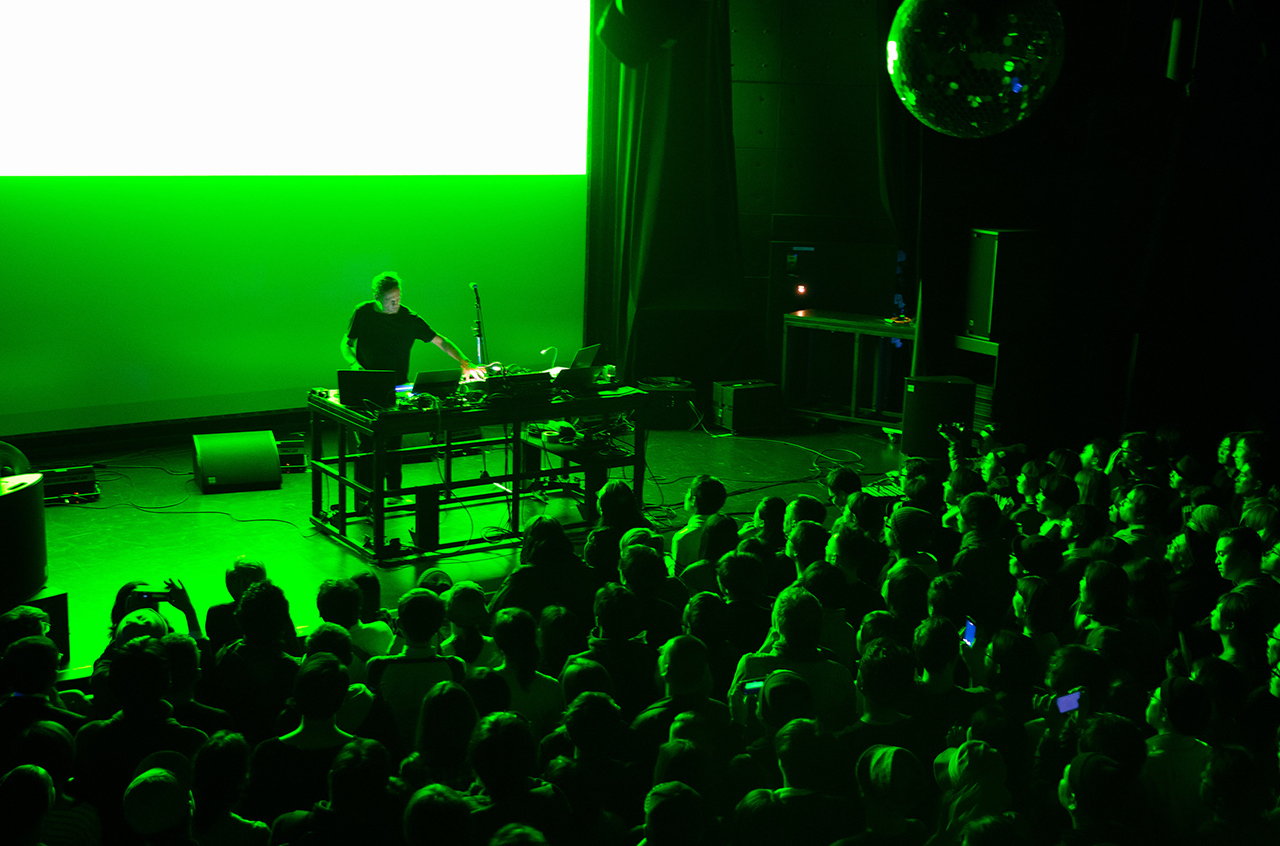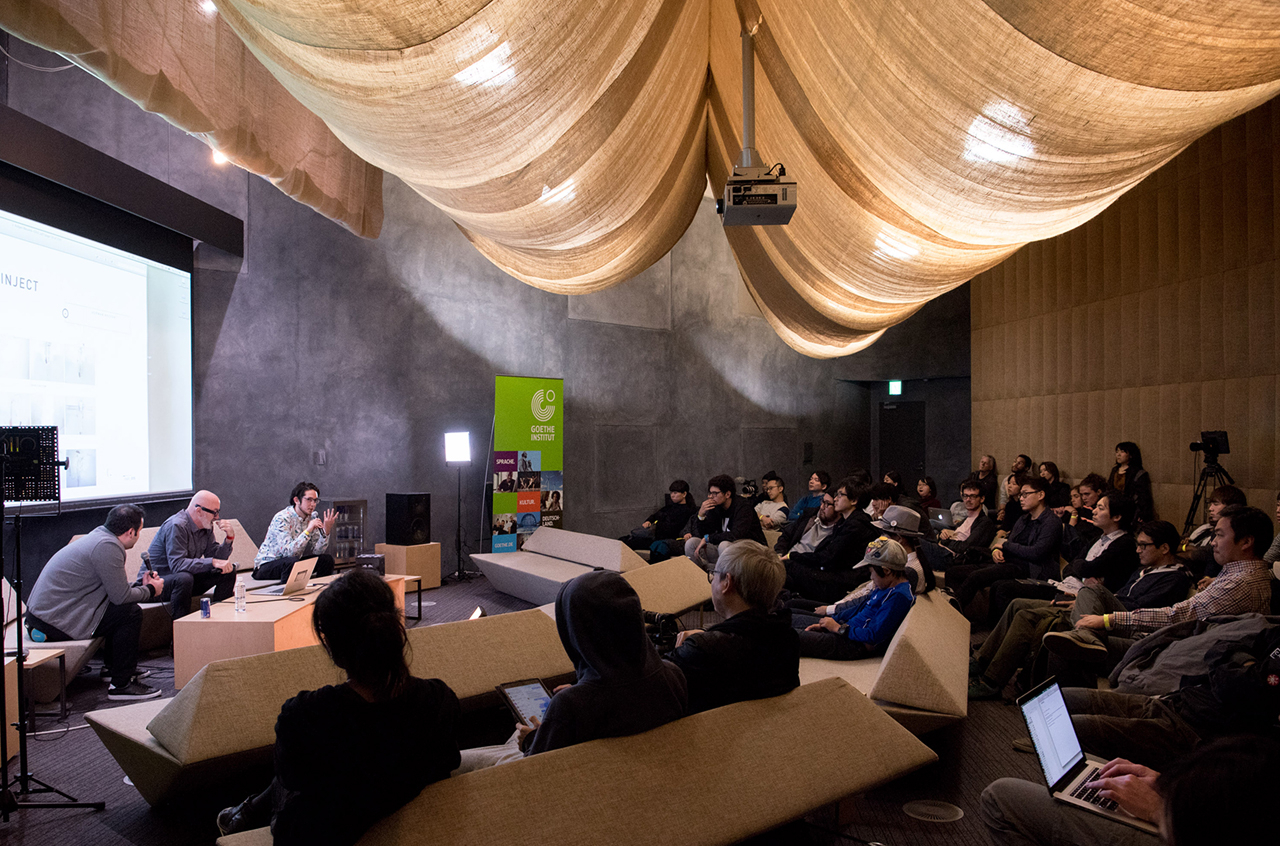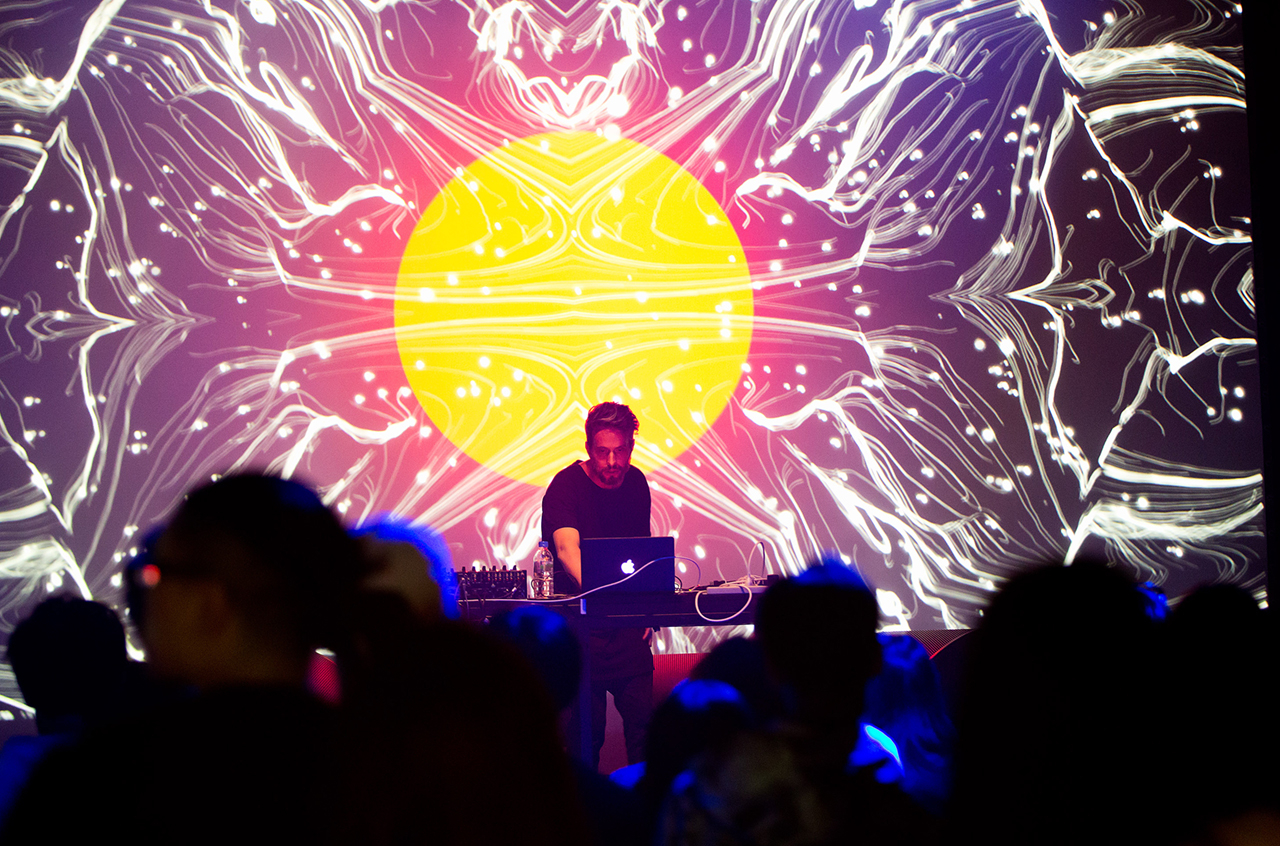- Founded in Montreal in 2000, MUTEK is among the most forward-thinking electronic music and audiovisual art festivals in the world. As well as the flagship edition, which runs in August, there are satellite events in Mexico and Barcelona, produced in partnership with local promoters. In November, Japan entered the fold. The long queue that wound around the WWW and WWW X venues in Tokyo's Shibuya district was testament to the anticipation surrounding the event.
WWW, with its large projection screens, Funktion-One soundsystem and spacious viewing terrace, was an ideal venue. WWW X's sound and visual components were a perfect match for MUTEK's vision. Canada's Martin Messier opened the A/VISIONS programme in WWW with a show called FIELD, using cables to patch sound between homemade electronic instruments. The cables flickered as electrical currents surged through them. The synchronisation of light and sound made for a stunning performance. Later, multidisciplinary artist Herman Kolgen presented AfterShock, which sets monochrome images of post-human deterioration to intense sonics, followed by Seismik, which features sounds generated by earthquakes and the Earth's magnetic fields. Both left a strong impression on the audience, largely due to Kolgen's use of the space. At points it felt like I was being engulfed by the Earth.
Upstairs at WWW X, Masaaki Ueno got Raster-Noton's 20th anniversary showcase underway. Centered around abstract beats, his performance compressed and expanded, before finally evolving into a torrent of sound. Dasha Rush's live set matched curved techno grooves to abstract visuals in a way that felt suited to the festival's NOCTURNE theme. Alva Noto was exceptional, every kick and splutter of noise finely polished. Byetone was more musically varied, switching suddenly from minimal passages to walls of noise, followed by downtempo electro. It was raw, funky body music. For the encore, all four artists took the stage together. The two label bosses pummelled out sound and moved to the rhythms more than anyone.
Before the night was over, there was just time to dip back into WWW for Max Cooper's audiovisual live set, Emergence. Bespoke images morphed in real time to the ebb and flow of the tracks, which drifted between melancholic tech house and IDM. It was one of the evening's most enjoyable performances.
A programme of workshops and lectures, titled DIGI_SECTION, took place at Red Bull Studios on Thursday. Being able to interact directly with the artists allowed the audience to develop a more intimate understanding of their work. The highlight was Herman Kolgen discussing INJECT, a project that involved filming a man in a zero-gravity glass tank for six days. It was almost like animal testing, minus the cruelty. The cinematography and experimental sound effects formed a beautiful composition.
The festival returned to WWW and WWW X on Friday for its final day. A/VISIONS 2, held in WWW, started earlier at 6 PM. Maotik & Metametric paired 8-bit sound with hypnotic visuals that emulated sandstorms and close-ups of a crashed computer screen, rooting the audience's eyes to the screens. Around 11 PM, Japan's Ena performed a dark ambient set, which was followed by the evening's highlight: Pheek + DIAGRAF. Presenting a worldly sound that was minimal and organic, they guided the audience through skilfully rendered textures and visuals. The audience swayed and slowly began to move. By the middle of their set, the dance floor was in full swing.
MUTEK.JP met all expectations. As soon as you were locked into one of the performances, you didn't want to leave. The programme was cutting-edge, inviting visitors to indulge their curiosities and experience music and art in novel and interesting ways. For Tokyo, it felt like a moment, the beginning of a new chapter for the city's music scene. From speaking to others, I know I'm not the only one who feels that way.
Photo credit /
Ryu Kasai, Stro!Robo

 The festival returned to WWW and WWW X on Friday for its final day. A/VISIONS 2, held in WWW, started earlier at 6 PM. Maotik & Metametric paired 8-bit sound with hypnotic visuals that emulated sandstorms and close-ups of a crashed computer screen, rooting the audience's eyes to the screens. Around 11 PM, Japan's Ena performed a dark ambient set, which was followed by the evening's highlight: Pheek + DIAGRAF. Presenting a worldly sound that was minimal and organic, they guided the audience through skilfully rendered textures and visuals. The audience swayed and slowly began to move. By the middle of their set, the dance floor was in full swing. MUTEK.JP met all expectations. As soon as you were locked into one of the performances, you didn't want to leave. The programme was cutting-edge, inviting visitors to indulge their curiosities and experience music and art in novel and interesting ways. For Tokyo, it felt like a moment, the beginning of a new chapter for the city's music scene. From speaking to others, I know I'm not the only one who feels that way. Photo credit / Ryu Kasai, Stro!Robo
The festival returned to WWW and WWW X on Friday for its final day. A/VISIONS 2, held in WWW, started earlier at 6 PM. Maotik & Metametric paired 8-bit sound with hypnotic visuals that emulated sandstorms and close-ups of a crashed computer screen, rooting the audience's eyes to the screens. Around 11 PM, Japan's Ena performed a dark ambient set, which was followed by the evening's highlight: Pheek + DIAGRAF. Presenting a worldly sound that was minimal and organic, they guided the audience through skilfully rendered textures and visuals. The audience swayed and slowly began to move. By the middle of their set, the dance floor was in full swing. MUTEK.JP met all expectations. As soon as you were locked into one of the performances, you didn't want to leave. The programme was cutting-edge, inviting visitors to indulge their curiosities and experience music and art in novel and interesting ways. For Tokyo, it felt like a moment, the beginning of a new chapter for the city's music scene. From speaking to others, I know I'm not the only one who feels that way. Photo credit / Ryu Kasai, Stro!Robo